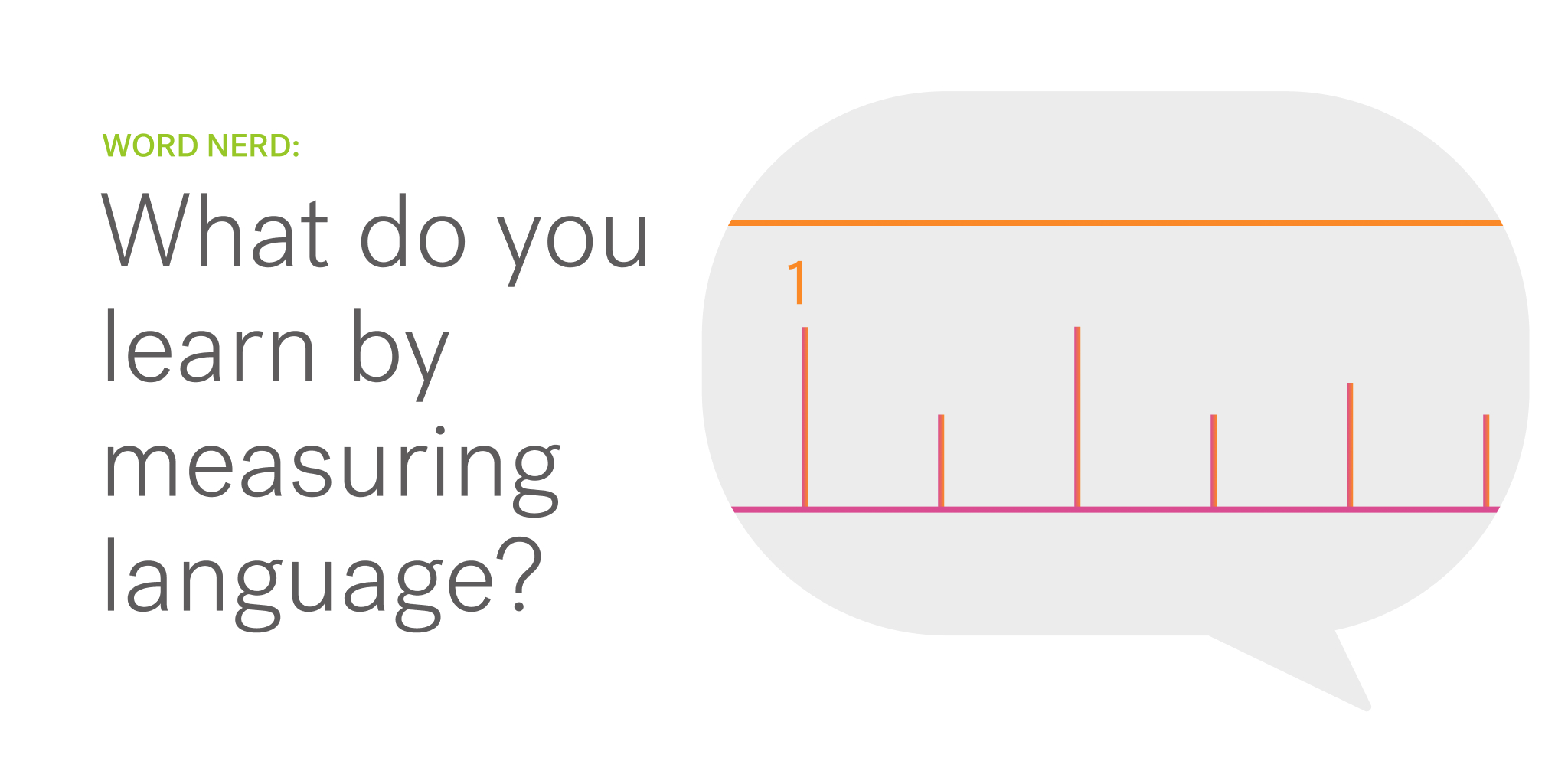What do you learn by measuring language?
Cultural signals that only language data can reveal
Julie Yue
Content Marketing Manager
November 18, 2020

The truism normally goes, “there are words people, and there are numbers people,” but at Textio, we’re both. We know that language is full of data. If you think about language as data you can understand cultures in new ways. For example, statistical analyses show that novelists unintentionally turn gender-neutral verbs into gendered ones: men “shout”; women “scream.”
One literary scholar, mining through mounds of digitized archives, proved that there were linguistics differences between Irish and British novels, which previous, more traditional studies could only hypothesize about. British novels were far more likely to use absolute words like “always,” “must,” “certain,” or “should.” Irish novels preferred indeterminant words, “some” or “near,” and hardly used “should” or “must.” Irish fiction was also far less likely to use “I,” “me,” and “my.” These tiny, hardly noticeable words only become important once you start counting them. Combined with the traumatic history of Ireland as a British colony, these differences revealed stark cultural truths: an uncertainty about the future and one’s place in it.
But language data doesn’t have to be relegated to old books, it is also crucial to understanding company culture, and what to improve ... before it’s too late. The Wells Fargo scandal of 2016, caused by a toxic sales environment, lost the company $30 billion in a single day. This study by MIT and Glassdoor showed that if Wells Fargo had looked at language data from their employee reviews, they would have discovered an ethics problem two years before the scandal became public. Compared with other large banks, Wells Fargo employees were “half as likely to discuss the bank’s ethics in positive terms.”
Being “data-driven” isn’t just reacting to sales figures; it’s also learning what people are saying, and how they’re saying it. Even the smallest words might reveal big ideas … or big problems.
For more examples of how language affects culture, see how Zillow showcases its company culture in its candidate communication, and how F5 used language data to affirm their values and behaviors.
For more examples of how language affects culture, see how Zillow showcases its company culture in its candidate communication, and how F5 used language data to affirm their values and behaviors.